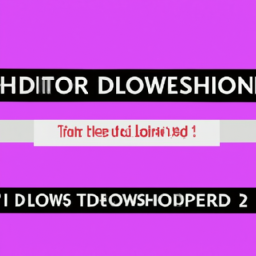How to Design Animated Lower Thirds Step by Step
Animated lower thirds are essential elements in modern video production, offering an engaging way to display information such as names, titles, or social media handles. Whether you’re a content creator, video editor, or graphic designer, knowing how to design animated lower thirds step by step enhances your video presentations with professionalism and flair. In this comprehensive guide, we’ll take you through the entire process, from conceptualization to animation, using best practices and industry insights.
What Are Lower Thirds?
Lower thirds are graphic overlays placed in the lower area of a video frame, typically used to introduce speakers, provide additional information, or promote branding. Animated lower thirds add motion and interest, making key details more eye-catching and memorable. They are commonly seen in news broadcasts, interviews, documentaries, and YouTube videos.
- Display names, titles, and locations
- Highlight social media links or hashtags
- Reinforce brand identity with logos and colors
Step 1: Planning Your Animated Lower Thirds
Before jumping into the design, it’s crucial to plan your lower third. Consider the following aspects:
- Purpose: What information do you want to convey? (e.g., speaker name, job title, Twitter handle)
- Audience: Who will be watching your video? Choose a style that resonates.
- Branding: Include your brand’s colors, fonts, and logo for consistency.
- Software: Decide on the design tools (Adobe After Effects, Premiere Pro, DaVinci Resolve, or free alternatives like HitFilm Express).
Tip: Sketch your ideas on paper or use wireframing tools before designing digitally.
Step 2: Designing the Layout
The layout is the backbone of an effective lower third. Follow these best practices:
- Hierarchy: Make the most important information (usually the name) stand out.
- Readability: Use large, sans-serif fonts and high-contrast colors against your video background.
- Balance: Keep your design clean and uncluttered. Leave enough padding and margins.
- Brand Elements: Add your logo or brand icon for visual identity.
Example Structure
+------------------+
| [Logo] Name |
| Title |
+------------------+
You can use shape layers, gradients, and icons to enhance the visual appeal. Color schemes should match your overall brand style guide.
Step 3: Animating Your Lower Thirds
Animation brings your lower thirds to life. Here’s how to animate them step by step:
-
Choose Animation Style:
- Slide In/Out: Text or shapes slide from the edge of the frame.
- Fade In/Out: Elements gradually appear/disappear.
- Scale: Elements grow or shrink for emphasis.
- Mask Reveal: Use masks to animate the text or graphics appearing.
- Set Keyframes: In your video editing software, add keyframes to your elements’ position, scale, or opacity.
- Timing: Keep animations brief (0.5–2 seconds) for a professional look.
- Ease and Flow: Use easing curves (such as “Ease In” or “Ease Out”) for smooth motion.
Pro Tip: Animate each element separately for more dynamic results (e.g., logo appears first, then text).
Step 4: Exporting and Using Lower Thirds
Once your animated lower thirds are ready, it’s time to export and use them in your video projects:
- Export with Transparency: Use formats like MOV (ProRes 4444) or PNG sequences to preserve the alpha channel (transparency).
- Import to Editing Timeline: Drag and drop the exported file into your main video timeline.
- Position and Timing: Adjust the timing so the lower third appears at the right moment and stays on screen for 3–7 seconds.
Most editing software allows you to reuse your animated lower thirds as templates for future videos, saving time and ensuring consistency.
Tips for Effective Lower Third Animation
- Avoid overusing complex effects—simplicity is key.
- Keep text concise and readable at all screen sizes.
- Use color and movement to draw attention, but don’t distract from the video content.
- Test your design against different backgrounds to ensure visibility.
- Save your lower third as a preset or template for future projects.
Conclusion
Creating animated lower thirds is a valuable skill for anyone involved in video content creation or motion graphics design. By following this step-by-step guide, you can produce professional, eye-catching lower thirds that enhance your videos and strengthen your brand. Practice experimenting with different styles, layouts, and animations until you find the perfect match for your audience.
FAQs About Animated Lower Thirds
- What software is best for designing animated lower thirds?
- Popular choices include Adobe After Effects, Premiere Pro, Final Cut Pro, DaVinci Resolve, and free options like HitFilm Express.
- How long should a lower third stay on screen?
- Typically, lower thirds remain visible for 3 to 7 seconds to ensure viewers can read the information comfortably.
- Can I use animated lower thirds in live streams?
- Yes! Many streaming platforms support overlays. Export your lower third with transparency and use software like OBS to add it live.
- What are LSI keywords for lower third design?
- Related terms include motion graphics, video overlays, broadcast graphics, animated titles, video branding, and template creation.
